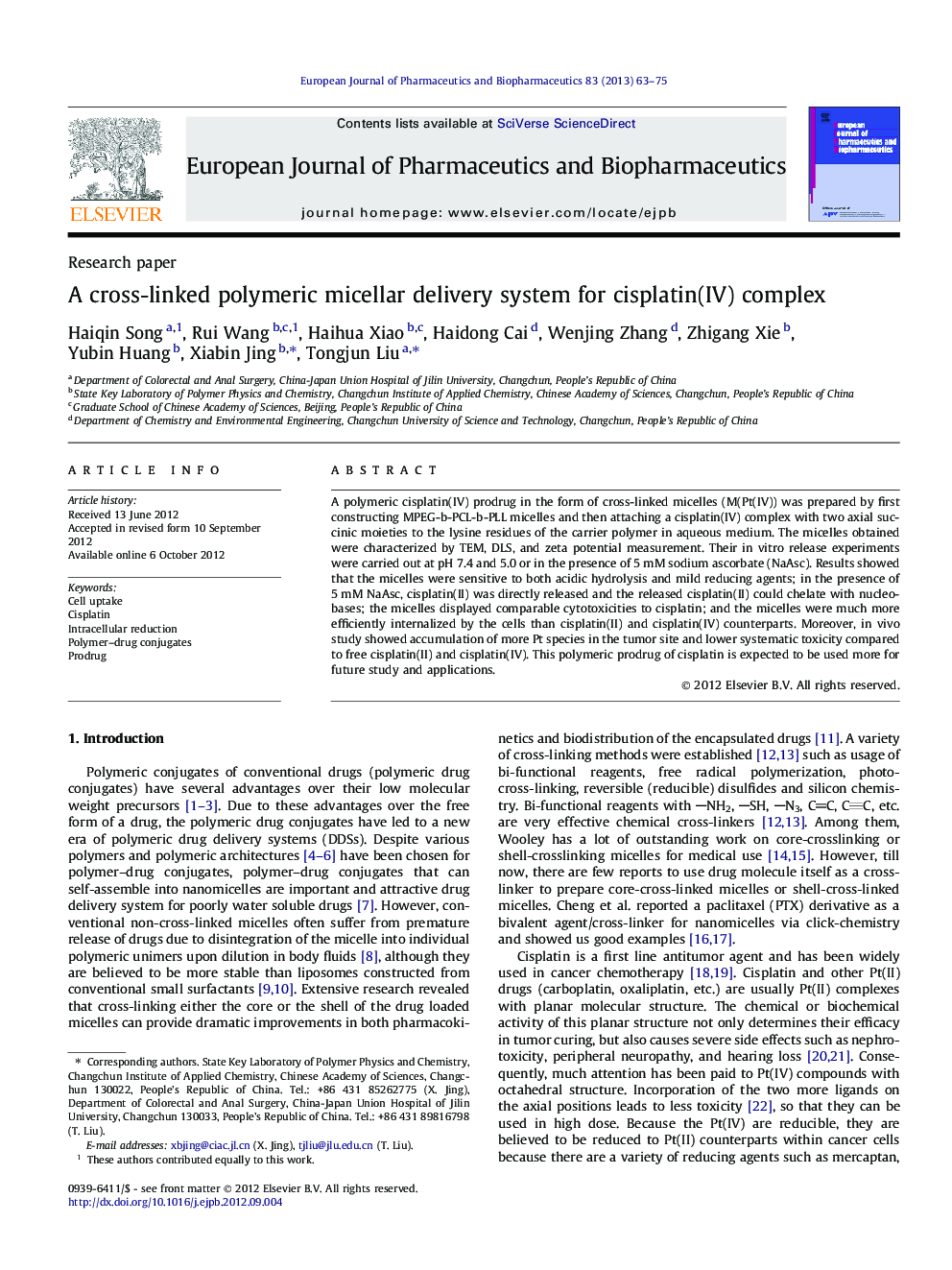| کد مقاله | کد نشریه | سال انتشار | مقاله انگلیسی | نسخه تمام متن |
|---|---|---|---|---|
| 2083798 | 1545355 | 2013 | 13 صفحه PDF | دانلود رایگان |

A polymeric cisplatin(IV) prodrug in the form of cross-linked micelles (M(Pt(IV)) was prepared by first constructing MPEG-b-PCL-b-PLL micelles and then attaching a cisplatin(IV) complex with two axial succinic moieties to the lysine residues of the carrier polymer in aqueous medium. The micelles obtained were characterized by TEM, DLS, and zeta potential measurement. Their in vitro release experiments were carried out at pH 7.4 and 5.0 or in the presence of 5 mM sodium ascorbate (NaAsc). Results showed that the micelles were sensitive to both acidic hydrolysis and mild reducing agents; in the presence of 5 mM NaAsc, cisplatin(II) was directly released and the released cisplatin(II) could chelate with nucleobases; the micelles displayed comparable cytotoxicities to cisplatin; and the micelles were much more efficiently internalized by the cells than cisplatin(II) and cisplatin(IV) counterparts. Moreover, in vivo study showed accumulation of more Pt species in the tumor site and lower systematic toxicity compared to free cisplatin(II) and cisplatin(IV). This polymeric prodrug of cisplatin is expected to be used more for future study and applications.
A polymeric prodrug of cisplatin was constructed from MPEG-b-PCL-b-PLL and a cisplatin(IV) complex containing two COOH groups on its axial positions. The latter also plays a role of cross-linker for the micelle formed. As a result, the polymeric prodrug showed enhanced stability in blood circulation, more accumulation in cancer site, lower systematic toxicity, and comparable cytotoxicity to cisplatin.Figure optionsDownload high-quality image (167 K)Download as PowerPoint slide
Journal: European Journal of Pharmaceutics and Biopharmaceutics - Volume 83, Issue 1, January 2013, Pages 63–75